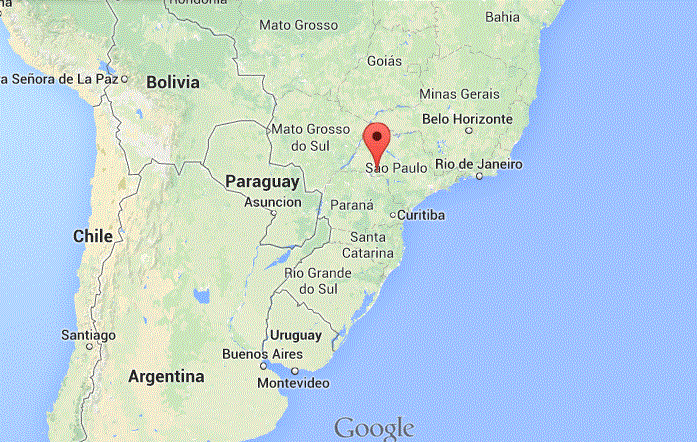Guadalajara, Tapatio, y Tequila
Arriving into Guadalajara was a little sketch as I had told my airBnB host that I would arrive at 8:30 pm, but after a few flight delays and inefficient customs, I was through the airport at 11 pm in a new city. Not ideal conditions for an arrival and a circumstance I almost always try to avoid. Luckily, my host had patiently waited and I was checked-in at 11:30 pm. After the rest of the familia arrived the next morning, we went to the centro historico de guadalajara. Our 20 minute taxi ride cost us 60 pesos, or 5 dollars. The first most obvious thing about Guadalajara is that there are no gringo tourists. Literally, walking around the most touristy part of the city where they have those open top double-decker buses, aka tourist ground zero, and not a gringo to be seen. Besides us of course. Despite our best efforts, there is simply no way for four gringos with heights of 5'10, 5'11, 6'2, and 6'3 to blend in. We even were asked to stand in a few family pictures for novelty as we walked around. We obliged. Our families faces are forever enshrined in the family pictures of a few Mexican families homes. In case you like Tapatio salsa, people from Guadalajara are called Tapatios.
From what I can tell, Guadalajara is known for two dishes, Torta Ahogada (drowning sandwich) and Birria (goat stew). Here is a picture of the former, cost was $30 pesos ($2.50 dollars):

Because of the lack of gringos, there is a complete lack of infrastructure in the gringo ripping-off business. If you have ever been to Cabo, Puerto Vallarta, or Cancun, you know exactly what I am talking about. Guadalajara simply doesn't have it. The city is self-sufficient and doesn't depend on gringo dollars. This is a great thing because it means that we don't get hassled. People don't know how to hassle us. They are too surprised to see us, and too eager to share their culture and practice their limited English. Guadalajara is extremely inexpensive. Our lunch in the downtown area for four was $120 pesos or $10. Beers in the nicest club in the city were $35 pesos, or $2.75, and we found beers on our walk-home at a random bar for $15 pesos each, or $1.25. Exchange rate is 13 to 1 in case you don't want to reverse engineer what I did there.
Today we went to Tequila. Yes, in case you were wondering why Tequila is called Tequila, it's because there is a town called Tequila in Jalisco, Mexico. Only Agave from Tequila can be called Tequila. Sort of like a Champagne versus Sparkling Wine situation. The key things to buying tequila correctly, are ensuring that it says Tequila on the bottle rather than just Agave, and ensuring that it says 100% Agave. If it doesn't explicitly say 100% agave, there is a 99% that what you are drinking is mixed. That means it is 51% agave and 49% sugar cane. Sugar cane is much cheaper than Agave and essentially is a cheaper way to make tequila and still call it tequila. Tequila aged 2 - 11 months is called Reposado, tequila aged 1-2 years is called añejo, and tequila aged 3+ years is called extra añejo. Here is a chart:

The agave plant:

Tequila tastings:

Tequila factory:

Vats of tequila:


Some sort of tequila goddess:

This is the town of Tequila:

Eating lunch in Tequila:

Yup, we were cruising around in a motorized Tequila vehicle. We shared the tour with Mexicans from Mexico City:

Artistic black and white photo that is Instagram worthy, except I don't have instagram.

Me and pops:

From what I can tell, Guadalajara is known for two dishes, Torta Ahogada (drowning sandwich) and Birria (goat stew). Here is a picture of the former, cost was $30 pesos ($2.50 dollars):

Because of the lack of gringos, there is a complete lack of infrastructure in the gringo ripping-off business. If you have ever been to Cabo, Puerto Vallarta, or Cancun, you know exactly what I am talking about. Guadalajara simply doesn't have it. The city is self-sufficient and doesn't depend on gringo dollars. This is a great thing because it means that we don't get hassled. People don't know how to hassle us. They are too surprised to see us, and too eager to share their culture and practice their limited English. Guadalajara is extremely inexpensive. Our lunch in the downtown area for four was $120 pesos or $10. Beers in the nicest club in the city were $35 pesos, or $2.75, and we found beers on our walk-home at a random bar for $15 pesos each, or $1.25. Exchange rate is 13 to 1 in case you don't want to reverse engineer what I did there.
Today we went to Tequila. Yes, in case you were wondering why Tequila is called Tequila, it's because there is a town called Tequila in Jalisco, Mexico. Only Agave from Tequila can be called Tequila. Sort of like a Champagne versus Sparkling Wine situation. The key things to buying tequila correctly, are ensuring that it says Tequila on the bottle rather than just Agave, and ensuring that it says 100% Agave. If it doesn't explicitly say 100% agave, there is a 99% that what you are drinking is mixed. That means it is 51% agave and 49% sugar cane. Sugar cane is much cheaper than Agave and essentially is a cheaper way to make tequila and still call it tequila. Tequila aged 2 - 11 months is called Reposado, tequila aged 1-2 years is called añejo, and tequila aged 3+ years is called extra añejo. Here is a chart:

The agave plant:

Tequila tastings:

Tequila factory:

Vats of tequila:


Some sort of tequila goddess:

This is the town of Tequila:

Eating lunch in Tequila:

Yup, we were cruising around in a motorized Tequila vehicle. We shared the tour with Mexicans from Mexico City:

Artistic black and white photo that is Instagram worthy, except I don't have instagram.

Me and pops:




Comments